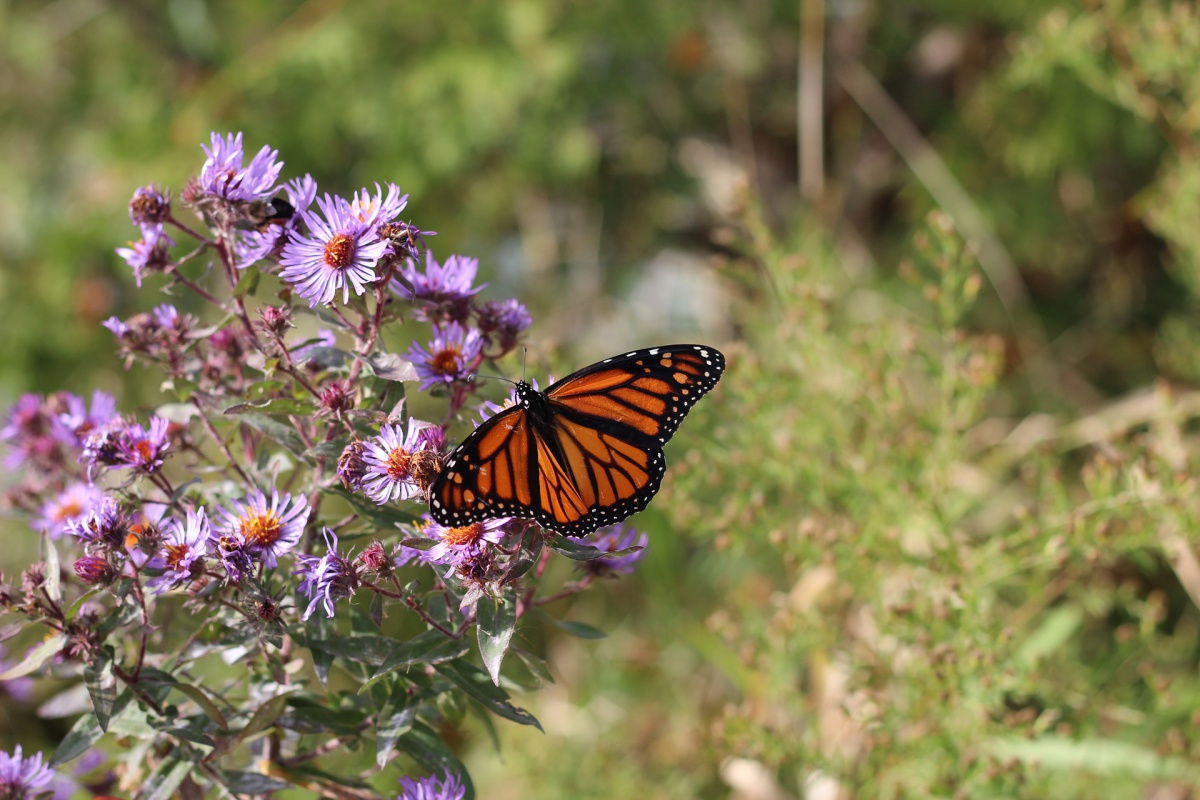Milkweed is taking over my perennial garden. How can I save some for the monarch butterflies but keep it from spreading?

Common milkweed (Asclepias syriaca) is a perennial plant that can be found in a wide range of habitats including roadsides, fields, and gardens. It is native to North America and reproduces primarily from seed. Once it is established it can spread from its rhizomatous root system. Common milkweed stems are covered with opposite, oval shaped leaves. The pink, clustered flowers are incredibly fragrant and are attractive to a wide range of pollinators, from bees to butterflies. The flowers eventually give way to bumpy seed pods that split open when mature and release windborne seeds with silky hairs.
All parts of the plant contain white, latexy sap that is filled with toxic cardiac glycosides. These poisonous compounds keep most predators from eating milkweed. One of the few exceptions is the monarch butterfly, which has evolved to be able to eat and accumulate the toxin in its body as a defense mechanism. Monarchs are so closely associated with milkweed that they cannot complete their lifecycles without milkweed as a food source.
In the landscape, common milkweed is often too aggressive and weedy to be widely appropriate for beds and borders. It is much better suited to unmaintained edges of fields or thickets. If you already have common milkweed in the garden, you can prevent further spread by removing immature seed pods. Since milkweed is a perennial, it will emerge again in the same spot next summer, but its spread will be more limited.
Individual plants can also be repeatedly hand-pulled or treated with an herbicide, but don’t be too hasty this season. Female monarchs have likely already laid their eggs or are in the process of doing so on the undersides of the leaves. Usually only one egg is laid per plant, and it can be very difficult to spot. More obvious are the Monarch caterpillars which are already quite active in many locations. Leaves that have been fed on and signs of frass are clear indications of their presence. They are easily recognized by their yellow, white, and black banded bodies, and black tentacles on their front and back ends. Be patient and wait to remove milkweed plants until after the butterflies have emerged from their crysalids, or in the late spring before the butterflies arrive.
If you decide to remove all of the common milkweed from your garden, consider replacing it with other less aggressive native milkweed species. Monarch butterflies will also utilize swamp milkweed (Asclepias incarnata), butterflyweed (Asclepias tuberosa), and whorled milkweed (Asclepias verticillata), all of which tend to grow in clumps and are good choices for perennial beds. For the ultimate butterfly habitat, leave some common milkweed on the outskirts.

Got questions? The Ask UNH Extension Infoline offers practical help finding answers for your home, yard, and garden questions. Call toll free at 1-877-398-4769, Monday to Friday, 9 a.m. to 2 p.m., or e-mail us at answers@unh.edu.
Related Resource(s)
Do you love learning about stuff like this?
SUBSCRIBE TO Granite State Gardening newsletter
Got questions? The UNH Extension Yard and Garden Infoline offers practical help finding answers for your yard and garden questions.
Call toll free at 1-877-398-4769, Monday to Friday, 9 a.m. to 2 p.m., or fill out webform.
